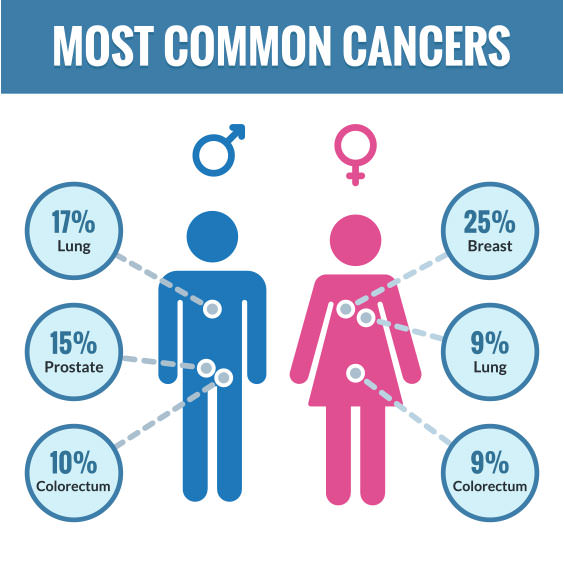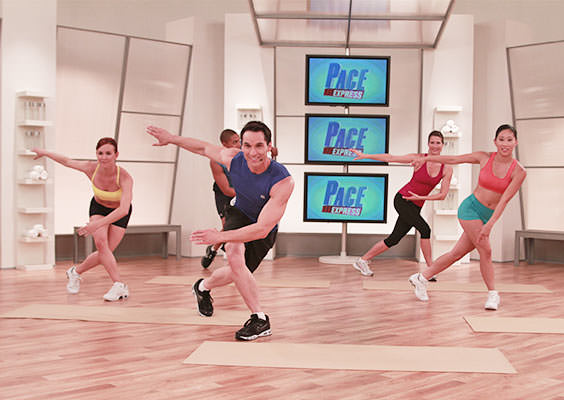You may think if you live long enough, it’s inevitable that you’ll get cancer.
Most people feel like every time they turn around, they hear about another person who has the disease.
But that doesn’t have to be the case.
It doesn’t take “good genes” or a drug with dangerous side effects to prevent cancer.
It takes exercise. That’s as simple as it gets.
Study shows exercise prevents 13 kinds of cancer
A new report backs this up. The study, published last month in the JAMA Internal Medicine, found that exercising can eliminate your risk of developing 13 different kinds of cancer. Including lung, colon and breast cancer. Three of the top four killers.1

Exercise also packs a wallop against leukemia, myeloma and cancers of the esophagus, liver, kidney, stomach, endometrium, rectum, bladder, and head and neck.
How exercise helps prevent cancer
It has to be the right kind of exercise. The “experts” still recommend a program of 150 minutes of moderate-intensity cardio activity a week… and that just won’t cut it.
The Study That Mainstream Media Ignored
There was a second study about exercise and cancer that received a lot less media attention.
How high-intensity exercise help reduce tumors
This study focused on the connection between a high-intensity exercise program and cancer. In this case, shrinking tumors.
Published a few months ago, this report found high-intensity exercise reduced tumors in mice by 50%.2
Researchers believe it’s because of the adrenaline surge that a high-intensity exercise produces.
The adrenaline pushes cancer-busting natural killer (NK) cells toward tumors.
NK cells are part of your innate immune system. They are a kind of white blood cell that seeks out and kills other infected cells (including tumor cells) while sparing healthy cells.
They also found that a chemical signal
produced by muscles during exercise called Interleukin 6 (IL-6) helps guide NK cells toward the cancer cells.PACE Your Way to Being Cancer Free
Our stone-age ancestors with their fight-or-flight adrenaline surges didn’t get cancer. And you don’t have to either.
To really get your adrenaline pumping, try my PACE program.
What is PACE?
PACE is a series of high-intensity, short-duration exercise routines. This kind of exercise duplicates the natural demands our ancient ancestors faced. A quick burst of speed to escape danger or capture dinner. It gave them fit, trim bodies.
PACE yourself to get started

Here’s an example of an easy routine to get you started. You can do it anywhere you have room to run.
- Run as fast as you can. Go all out. Exert yourself. Feel your adrenaline pumping.
- Then slow down to an easy pace when you feel you can’t go a second more. You should be panting hard. Take 3 to 5 minutes to recover. Focus on your breathing and feel it slowing down. Keep track of how long it takes for your breathing to return to normal as a way of monitoring your progress.
- Now challenge yourself again. But this time, sprint a little faster than you did last time. Or go a little longer. If you’re panting but not so out of breath that you can’t talk, then you’re doing it right. Repeat for a maximum time limit of 12 minutes. Not a second more.
The benefits of PACE
The best part about PACE is that it works no matter what your current fitness level is. Start out slowly and gradually increase the challenge. Either increase the number of repetitions you do or how fast you do them.
Remember, to make it a true PACE workout, you must rest and recover between sets. Just like your ancestors did.
To Your Good Health,
![]()
Al Sears, MD, CNS
1. healthguidance.org/entry/15796/1/Top-5-Killer-Cancers.html
2. Line Pedersen et al. Voluntary running suppresses tumor growth through Epinephrine- and IL-6-Dependent NK cell mobilization and redistribution. Cell Metab.2016 February. DOI:10.1016/j.cmet.2016.01.011
